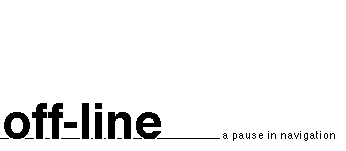Censis is a major, government-supported institution for
social analysis and research in Italy. In July, 2001 it
published its first report on the availability and use of
communication resources in Italian families. It’s a massive
document (over 100 pages) but some of its basic findings can
be summarized briefly – and reveal circumstances and
attitudes that are probably found, in varying proportions,
also in other countries.
They report that they were “surprised” to find
a greater availability and variety of communication tools
than they expected. Of course almost everyone has radio and
television – and mobile phones are widely spread. But they
also found books, newspapers, magazines, video recorders,
videogames, computers and internet connections much more
widely than was generally thought.
The key finding is that the abundance of available
resources doesn’t mean that they are used. Censis found a
distinction that divides families roughly 50-50. Half of them
have an increasing abundance of information and communication
tools and have problems adjusting to clutter – how to manage
the variety and the overload. People in the “other
half” may have the tools but lack the knowledge and the
desire to use them.
Censis comments that this «is the picture of a
country in which half of the citizens have the cultural tools
(over and above technical resources) to benefit from the
opportunities offered by the “information society”,
while the other half have serious handicaps that are not
caused by the lack of tools but by a deficit of linguistic
competence, cognitive habits and behavioral motivations.»
This is not a new development and was not caused
by the availability of new tools. It has its roots in pre-existing
cultural circumstances. As Censis reports, «the people
that read books and newspapers – and are familiar with radio,
teletext and videorecorders – feel more easily comfortable
with computers and the internet. The other half of the people
may have their homes full of media, old and new, but don’t
use them, continuing to have television as the dominant, if
not only, point of reference.»
According to this report there is a computer in 43
percent of homes but only in 20 percent it is used regularly.
There is an internet connection in 20 percent (and growing)
but it’s actually used only by about half (11 percent) of the
people. People may be buying equipment and tools because they
want to “keep up with the trend” but that doesn’t
mean that they are changing their habits and attitudes.
Except for cases of extreme poverty or isolation, the
“information have-nots” are not conditioned by lack
of tools. Their problem is that they are not really
interested in what those resources have to offer.
The effective users of new technologies are the same
people who already knew how to use a variety of information
and communication tools.
In the case of television, “new” resources
(satellite and cable) are underdeveloped in Italy compared to
other European countries. But they are beginning to grow – in
that part of the population that was already well equipped
with a variety of communication tools. In the other half,
“generic” television prevails – with programming
aimed at its “heavy users” and therefore
repetitive, superficial and intellectually dull. When these
people read newspapers or magazines, they concentrate on the
same stuff that they are watching on television (such as
sports, fashion or gossip). If they use (occasionally) the internet,
they go for “more of the same” – a repetition
or enhancement of their favorite tv programs and personalities.
In simple words: there is no “digital divide”.
Users of “digital” tools are the same people that
know how to use all sorts of information and communication.
There is a “cultural divide” and it’s staying where
it was – or getting worse.
In other countries the proportions may be different.
There may be a higher or lower percentage of
“haves” and “have nots”. But (except in
that unfortunately large part of the world where there are
severe restrictions on information and freedom, or extreme
poverty, or both) “to he best of my knowledge” the
nature of the “divide” is more or less the same.
This is a serious problem. And it can not be solved just
by increasing the availability of technology or technical
training. It’s a problem of basic education in knowledge,
curiosity, awareness, openness and sharing.



